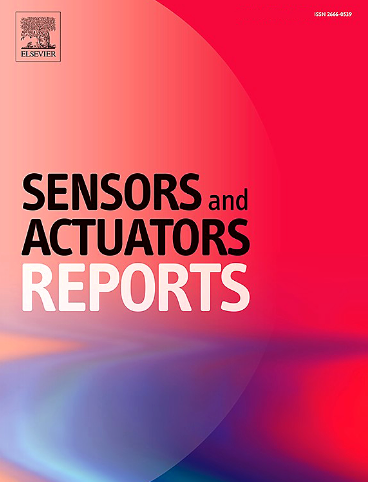Morphology controlled fabrication of zinc phosphate hierarchical microspheres for room temperature ammonia gas sensor
IF 7.6
Q1 BIOTECHNOLOGY & APPLIED MICROBIOLOGY
引用次数: 0
Abstract
Hierarchical Zinc phosphate nano/microstructures with controlled morphological features were synthesized in aqueous solutions through simple and economical route without using any type of surfactant or template. SEM analysis revealed novel morphologies of the synthesized powders i.e., hierarchical microspheres, urchin like microspheres, nanoflowers and nanoellipsoids and unfolded that produced morphologies strongly depended upon the applied experimental conditions. Selected batches of the synthesized powders i.e., hierarchical microspheres, urchin like microspheres and hierarchical nanoellipsoids were selected for further analysis using XRD, FT-IR, BET analysis and gas sensing application and termed as Zinc Phosphate 1 (ZP1), Zinc Phosphate 2 (ZP2), and Zinc Phosphate 3 (ZP3), respectively. XRD results confirmed the crystalline nature of the as-prepared powders with crystallite sizes 16.5 nm, 30. 15 nm and 37.01 nm, for ZP1, ZP2 and ZP3, respectively. Evaluation of gas sensing properties of the selected samples revealed that sensors based on ZP1 showed highest gas sensing response of 89 % with response recovery time 31/12 s, towards 5 ppm ammonia at room temperature. In addition, the lowest detection limit was investigated to be <1 ppm. Because of the excellent gas sensing performance, the synthesized zinc phosphate structures could be employed as promising candidates for developing highly sensitive and selective room temperature ammonia gas sensor.

室温氨气传感器用磷酸锌分级微球的形貌控制制备
在不使用任何表面活性剂和模板剂的情况下,通过简单经济的方法在水溶液中合成了具有控制形态特征的分层磷酸锌纳米/微结构。SEM分析揭示了合成粉末的新形貌,即层次微球、海胆微球、纳米花和纳米椭球,并揭示了其产生的形态与应用实验条件密切相关。通过XRD、FT-IR、BET、气感等方法对合成的粉末进行进一步分析,分别命名为磷酸锌1 (ZP1)、磷酸锌2 (ZP2)、磷酸锌3 (ZP3)。XRD结果证实了所制备粉体的结晶性,晶粒尺寸为16.5 nm, 30。ZP1、ZP2和ZP3分别为15 nm和37.01 nm。对所选样品的气敏性能进行了评价,结果表明,在室温下,对5 ppm氨的气敏响应最高,达到89%,响应恢复时间为31/12 s。此外,还研究了最低检出限为1ppm。由于所合成的磷酸锌结构具有优异的气敏性能,可作为高灵敏度、高选择性室温氨气体传感器的候选材料。
本文章由计算机程序翻译,如有差异,请以英文原文为准。
求助全文
约1分钟内获得全文
求助全文
来源期刊

Sensors and Actuators Reports
Multiple-
CiteScore
9.60
自引率
0.00%
发文量
60
审稿时长
49 days
期刊介绍:
Sensors and Actuators Reports is a peer-reviewed open access journal launched out from the Sensors and Actuators journal family. Sensors and Actuators Reports is dedicated to publishing new and original works in the field of all type of sensors and actuators, including bio-, chemical-, physical-, and nano- sensors and actuators, which demonstrates significant progress beyond the current state of the art. The journal regularly publishes original research papers, reviews, and short communications.
For research papers and short communications, the journal aims to publish the new and original work supported by experimental results and as such purely theoretical works are not accepted.
 求助内容:
求助内容: 应助结果提醒方式:
应助结果提醒方式:


